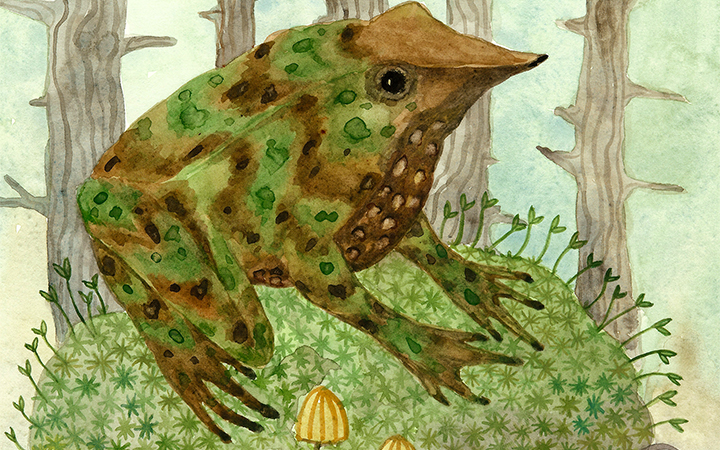The Chile Darwin’s frog (Rhinoderma rufum), also called the Northern Darwin’s frog,[2] is one of only two members of the family Rhinodermatidae. It is endemic to central Chile.
The Chile Darwin’s frog has a snout to vent length of about 32 mm (1.3 in). It has a fleshy proboscis, slender limbs and feet webbed between the first and second, and the second and third toes. The dorsal colour is variable but is usually some shade of brown or green, or a mixture of the two. The ventral surface is mottled in black and white.[3]
The Chile Darwin’s frog is diurnal and feeds on small insects and other invertebrates. The female lays a small clutch of eggs on moist ground. About a week later the embryos are beginning to move within the eggs and the male picks them up and stores them in his vocal sac. He keeps them there until they have developed a functioning gut and then transports them to a suitable water body and releases them. The tadpoles grow further in the water and undergo metamorphosis there. This development is in contrast to that of the Darwin’s frog (Rhinoderma darwinii) tadpoles which complete their development in their parent’s vocal sac.[3]
The Chile Darwin’s frog has a very restricted range in central Chile, being found in Talca Province and southwards to Bío Bío Province, between from 33° 30’S to 37° 50’S. Very little is known about this species, but its natural habitats are probably temperate forests, rivers and swamps. It has been found in wet beech forests at altitudes of between 50 and 500 metres (160 and 1,640 ft) above sea level.[1][3]
(From Wikipedia, June 2015)




